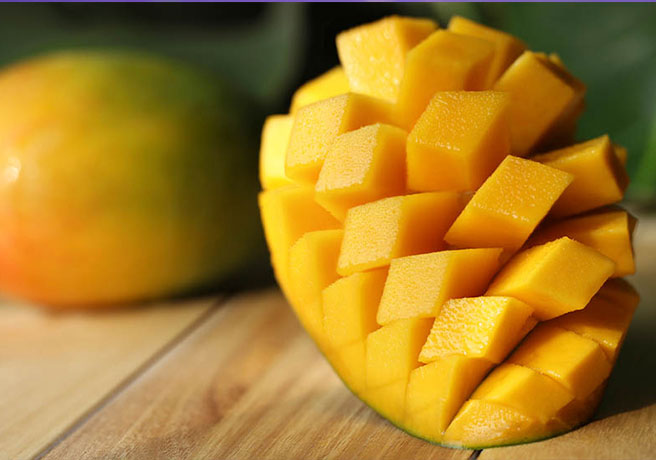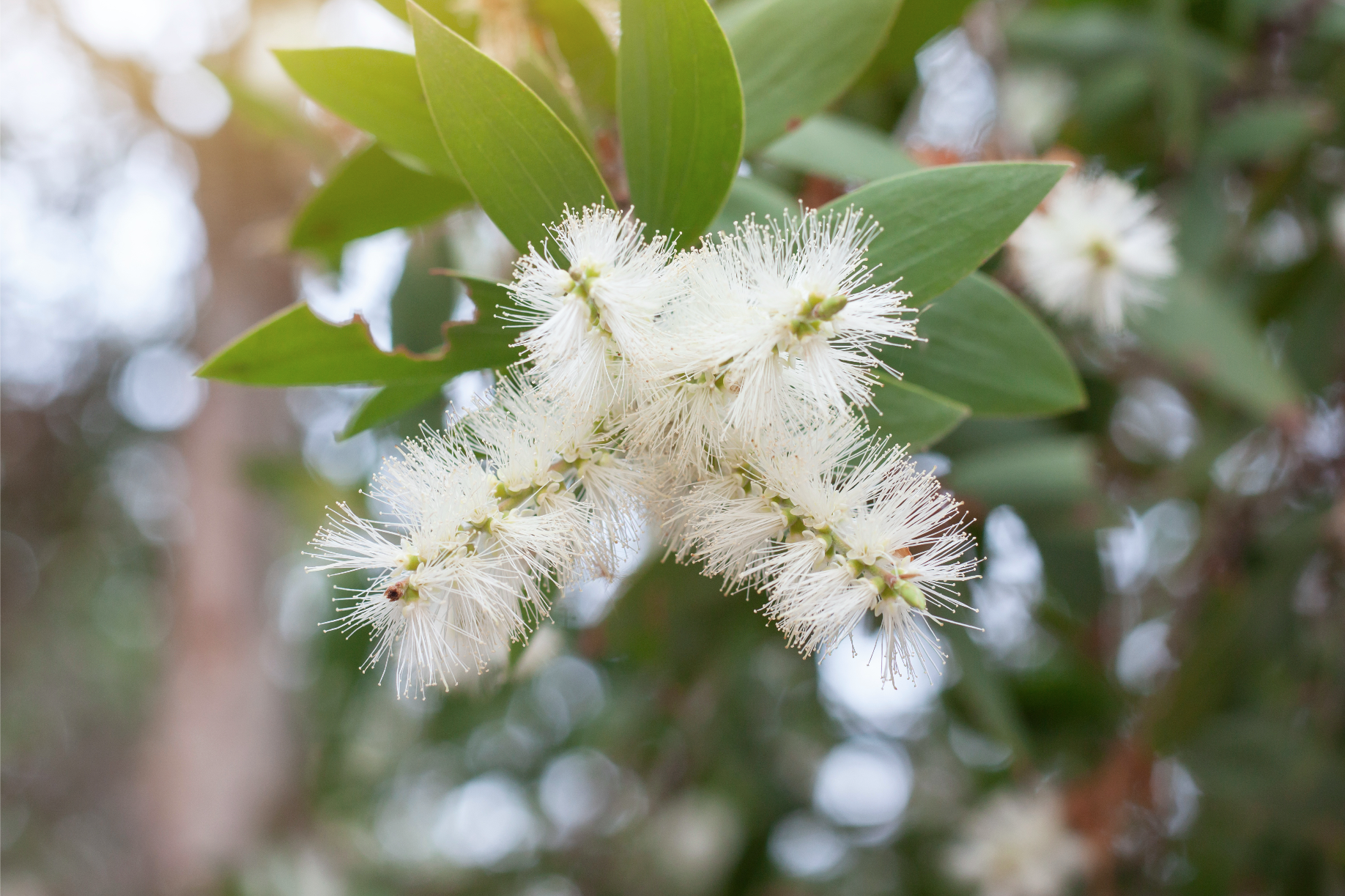
Cajeput Oil
Steam distillation of leaves from the Cajeput tree, can net you this aromatic oil. Research into cajeput oil has show it’s benefits lie not only in it’s aromatics, but its composition also. Aromatically, research has show it may be effective for clearing airways and help to relief coughs, colds, and congestion. Topically, it’s used frequently in massage therapy because of it’s warming sensation and, due to the terpenes contained within, anti-inflammatory properties.
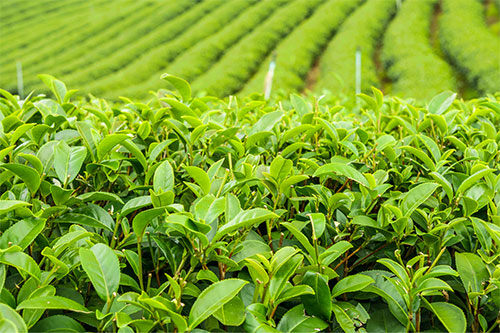
Camellia Sinensis
This plant, often referred to as the tea plant, has a multitude of benefits ranging from it’s antioxidant properties found in the Catechins to that of it’s anti-inflammatory properties found in its amino acids. Studies performed on the tea plant show it’s also a wonderful source of caffeine, which may help prevent type 2 diabetes, heart disease, dementia, and Alzheimer’s disease. The caffeine in the tea plant also blocks adenosine receptors and increase dopamine levels, giving us the alertness, stimulating, and mood-enhancing effects we know it best for.
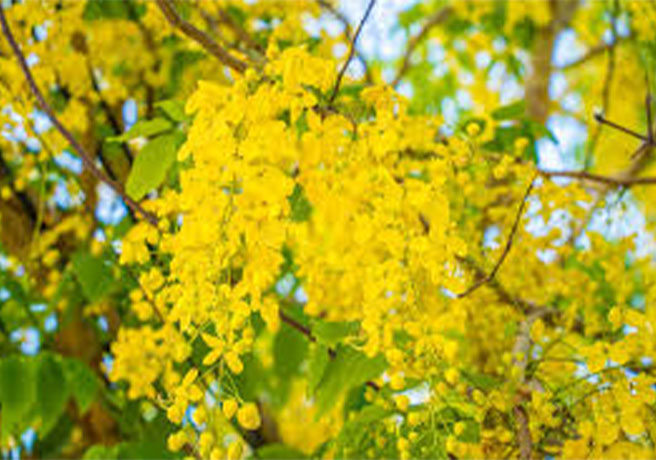
Cassia Tree
The Cassia tree, sometimes referred to as Chinese cinnamon, is commonly used around the world as both a spice in Asian countries and a therapeutic treatment in traditional Chinese medicine. While common in many curry recipes, this oil is considered one of the 50 fundamental herbs of traditional Chinese medicine. Modern research on this ingredient shows a wide range of pharmacological effects such as anti-inflammatory, analgesic, anti-obesity, antibacterial, cardiovascular protective, and neuroprotective to name a few.
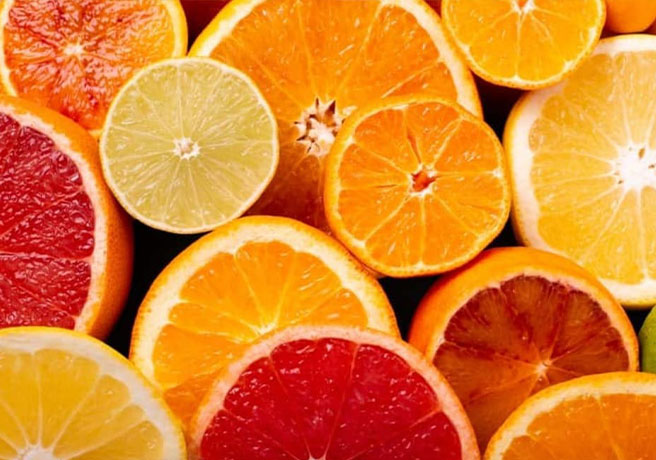
Limonene (Citrus)
Limonene is one abundant terpenes found in the hemp plant, but if you’re an avid fan of citrus, such as lemons and oranges, you’ve probably encountered its zesty aroma multiple times. Research into this terpene shows there is more to this energizing compound than just smell though, showing a variety of potential therapeutic benefits. A review done on this terpene shows it’s not only an antioxidant and anit-inflammatory, but has also been shown to help boost the immune system.
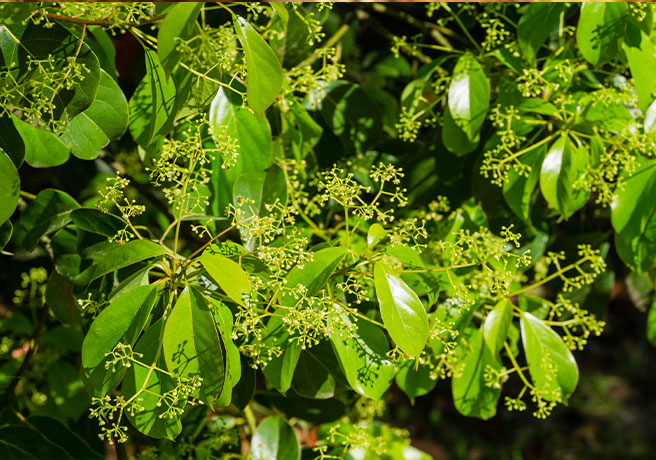
Camphor
Camphor oil is produced by distilling the bark and wood of the camphor tree in East Asia. Research into this strongly aromatic ingredient has found uses both via inhalation and topically. One of the most common uses for this plant is to create a cold sensation through inhalation, to make breathing easier and when applied to the chest, reduces cough. Other studies have also shown this ingredient also helps to relieve pain, providing relief locally to the applied area.

Caryophyllene (Clove)
Caryophyllene, known formally as beta-caryophyllene is an aromatic compound (terpene). While is is found prominently in the stems and flowers of cloves, it also can be found in the hemp and rosemary plants. Aromatically caryophyllene adds peppery, spicy, and sweet aromas to mixtures, but research into the properties of the plant shows it has strong anti-inflammatory properties, improves sleep quality, and can even provide pain relief by binding and activating CB2 receptors.
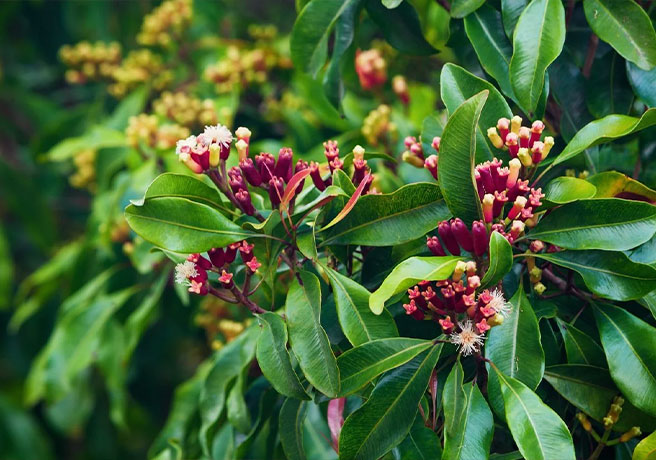
Clove Tree
While Clove trees provide many different ingredients than can be used, one interesting ingredient is that of clove oil. Clove oil is produced by distilling the dried flower buds that are collected from the tree. While this oil has shown multiple benefits, the primary use in our products is for the analgesic properties it displays. Studies have shown that when applied topically to the skin, it can help to provide pain relief, potentially by inhibiting the P2X3 receptor that deals with peripheral pain.
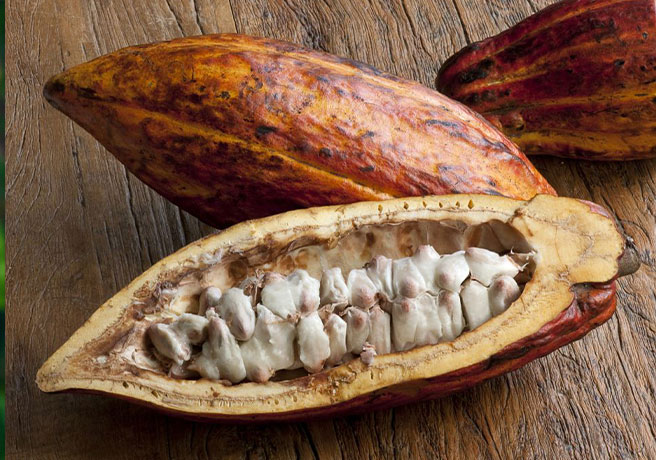
Cocoa Pods (Cocoa Butter)
The cocoa butter extracted from these beans are loaded with antioxidants and fatty acids. Cocoa butter’s high antioxidant levels not only provide anti-inflammatory properties, but also helps to fight off free-radical damage that create dark dull skin. The high fatty acid content in cocoa butter provides deep moisturizing properties, hydrating the skin on a cellular level!

Coconut (MCT Oil)
Medium Chain Triglycerides (MCT oil) are fatty acids sourced from many different foods, with coconut oil being the primary source. MCT Oil is our carrier oil of choice because research has shown that it helps the body absorb ingredients better and faster in comparison to other oils, and up to 3x more than cannabinoids in powder form. Studies also show MCT oil to prevent lactic acid buildup, promote heart health, and can be a great source for energy.
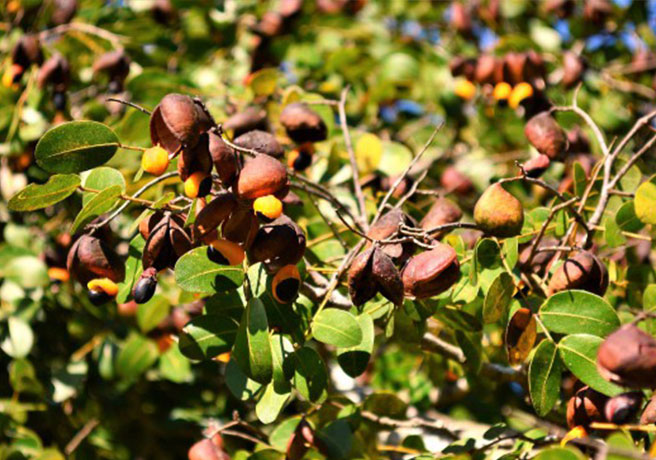
Copaiba Tree
The resin of the Copaiba tree can be used to produce one of our favorite oils. Copaiba oil, with a soothing spicy and woody scent, has been around since the 16th century and utilized in many traditional health practices in eastern South America. Research into Copaiba oil has found that it has many potential therapeutic benefits both through inhalation, ingestion, and when applied topically. One of the most common results being found in studies is its potential to fight inflammation by lower some of the molecules associated with inflammation and decreasing oxygen radicals. Another study found that those with arthritis has decreased pain and an overall increase in strength and dexterity.
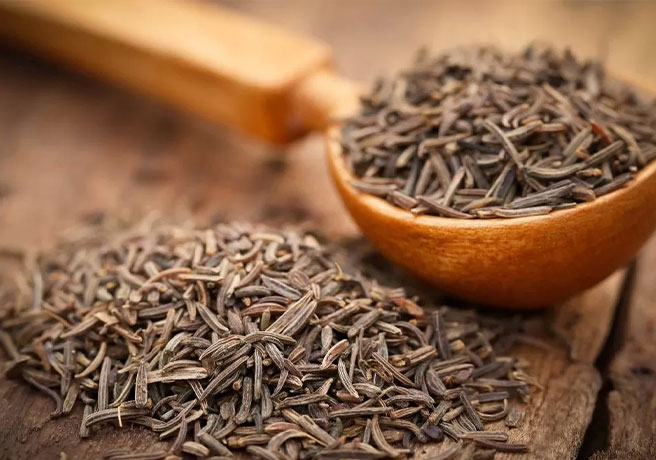
p-Cymene (Cumin)
Cymene, or p-Cymene in specific, is an aromatic compound (terpene). Cymene can be found in a wide array of plants ranging from cumin and hemp to that of thyme and oregano. Research into this compound has found numerous potential health benefits. Studies have show cymene can help to relax smooth muscle tissue and lower the risk of seizures which could help with high blood pressure, vascular disease, and congestive heart failure. Paired with this, Cymene has shown potential in preventing injury based pain and reduce inflammation showing a big promise as a pain reliever. Current research is exploring cymene as a cancer treatment due to the recent discovery that it is toxic to lab-grown human cancer cells (cell cultures) while leaving healthy cells unharmed.
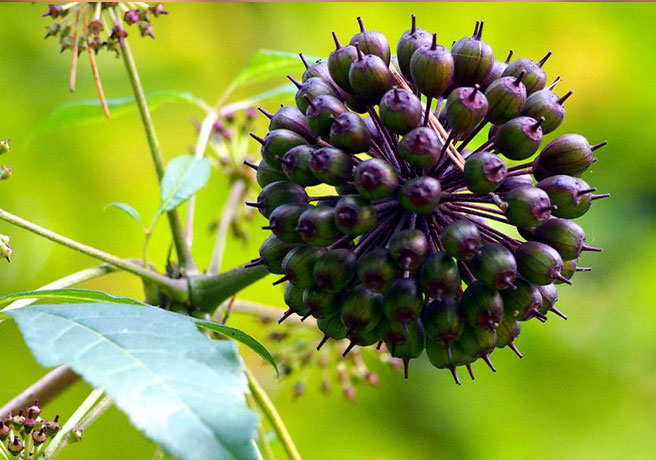
Eleuthero (Siberian Ginseng)
Eleuthero, or Siberian ginseng, is an herb originating in Northeastern Asia and is often referred to as the first ingredient to be labeled an adaptogen (plants and mushrooms that help your body respond to stress, anxiety, fatigue, and overall wellbeing). Eleuthero earned it’s name as an adaptogen by being remarkably high in antioxidants, which has potential for helping to improve both short- and long-term memory by decreasing the oxidative stress. Studies into this ingredient have also shown its ability to boost energy, metabolism, and physical performance, potentially leading to increased cardiovascular health.
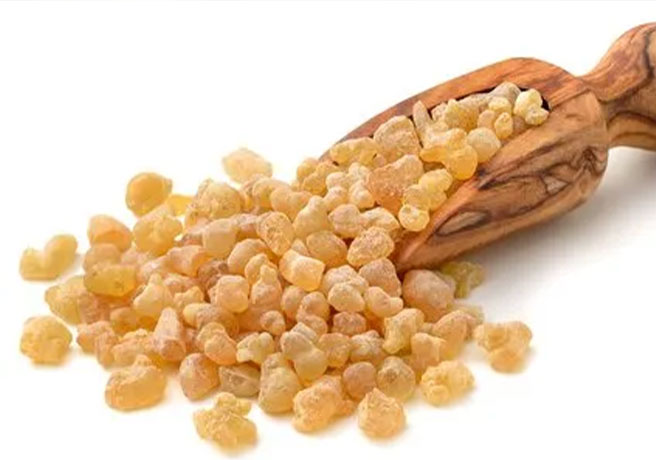
Frankincense
An aromatic resin extracted from Boswellia trees, Frankincense works to help your skin in a multitude of ways. Frankincense works on the skin to not only reduce the appearance of large pores, but strengthen the skin and improve its overall elasticity and tightness. When applied to the skin, it also acts as a defense mechanism against facial bacteria, acne, and other blemishes.

Helichrysum Flower
Helichrysum, also know as the everlasting flower, helps with skin rejuvenation and reduce the appearance of blemishes. Belonging to the Sunflower family, research has shown that the aromaticity of helichrysum can help to provide a little bit of sunshine in your life, by helping to reduce mental exhaustion. More studies into the flower have show that it may help to fight infection by working remarkable well against common microorganisms.
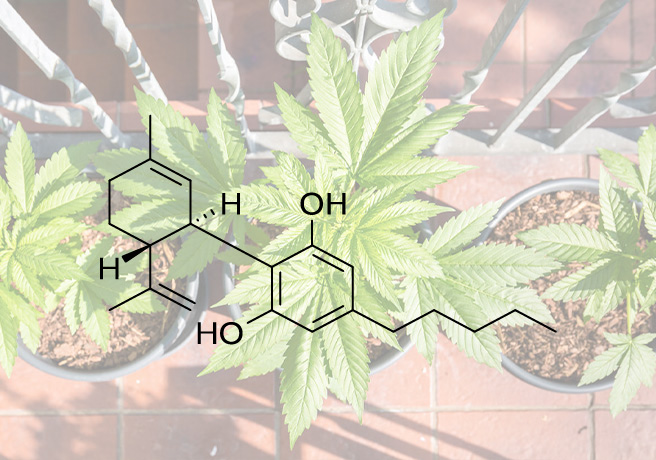
Cannabidiol (CBD)
Cannabidiol (CBD) is the second most common cannabinoid found in the Cannabis sativa plant. While discovered around 1940, it wasn’t until the 1980’s that the benefits of this ingredient really began to be deeply researched, when Dr. Mechoulam found that CBD was a treatment for epilepsy. Since then, there has been a push to produce CBD dominant strains of the Cannabis sativa plant, often times referred to as hemp, for the natural healing effects of the plant. As research has shifted to hemp, new studies are published frequently discussing CBD’s potential for use as a analgesic, anti-inflammatory, antiemetic, antihyperglycemic, antispasmodic, anxiolytic, anti-insomnia, and a neuroprotective just to name a few.

Cannabinol (CBN)
Cannabinol (CBN) is a minor cannabinoid found in the Cannabis sativa plant. CBN was first discovered in the late 1800’s, becoming the first cannabinoid ever isolated from the plant. While research on this compound dates back to the 1930’s and 1940’s, only recently has its medicinal benefits truly come to light. Most sources only note of CBN’s ability to improve sleep quality, but recent studies show a host of potential benefits ranging from pain, itch and inflammatory relief to treatment of ocular disease with some sources even noting potential neuroprotective properties.
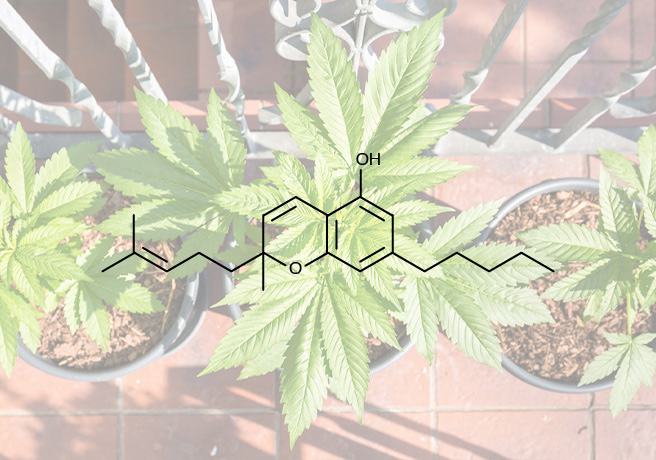
Cannabichromene (CBC)
Cannabichromene (CBC) is a minor cannabinoid found in the Cannabis sativa plant. CBC was first discovered by two different groups of scientists at the same time in 1966. At the time, little research was done on this ingredient while research primarily focused on CBD and other cannabinoids. Recently though, research has started to unearth the potential benefits of CBC. The most frequently studied aspect of CBC is its anti-inflammatory and pain relieving properties, showing promising results in inflammation of the intestinal tract, edema, migraines, and pain caused by nerve damage. In conjunction with other cannabinoids, other studies have shown it may be have potential as an antidepressant, neuroprotector, or antibacterial/antifungal ingredient.

Jiaogulan (Gynostemma Extract )
Jiaogulan powder, sometimes referred to as Southern Ginseng or Gynostemma, comes from a wild vine of the same name, growing throughout South and East Asia. Many sources note that jiaogulan is known as an adaptogen (plants and mushrooms that help your body respond to stress, anxiety, fatigue, and overall wellbeing). Jiaogulan gets its adaptogen title because it contains over 80 different saponins, compared to the 28 found in Ginseng. Research on saponins show that they decrease blood lipids, lower cancer risks, and lower blood glucose response. This points to having potential health benefits for cardiovascular health, maintained of a normal body weight, and an overall boost to the immune system.
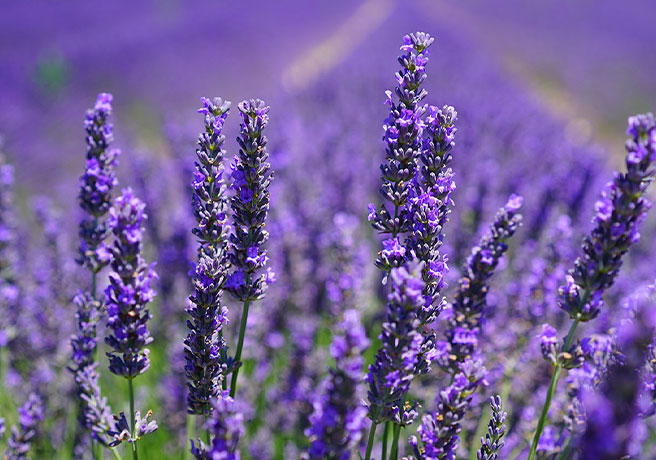
Linalool (Lavender)
Linalool is an aromatic compound (terpene), found in over 200 types of plants. Linalool is one of the most recognizable scents, smelling of lavender with a slight spiciness. Linalool has been studied extensively and even shown to trigger in the emotion and memory centers of the brain, leading to and overall relaxed and improved mood. Due to these sedative effects, linalool is used in medicine across the globe. Studies with mice, show linalool reduce levels of anxiety and depression-like behaviors, while with humans studies have shown a remarkable drop in anxiety levels following inhalation. Digging even deeper into the research, linalool has been shown to potentially help the immune system fight against the effects of stress by activating the parasympathetic nervous system, which ultimately dictates your ability to relax during “fight or flight” moments.
Myrcene (Mango)
Myrcene is an aromatic compound (terpene), found naturally in a wide array of plants ranging from citrus fruits such as the mango to more traditional agriculture such as hops and hemp. Research done with this ingredient suggests it has wonderful analgesic, sedative, and anti-inflammatory properties.
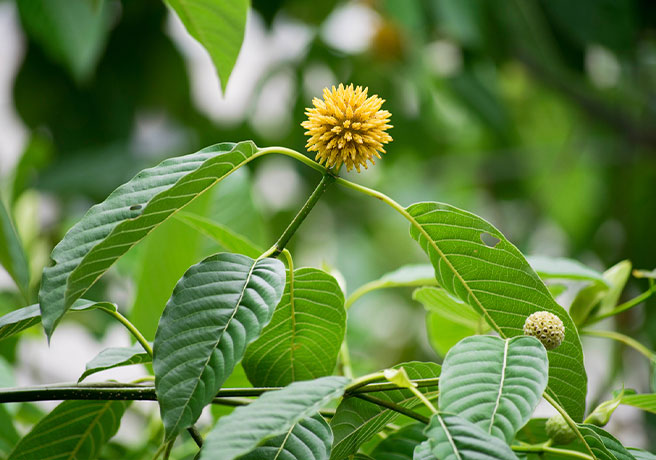
Mitragyna Speciosa
Mitragyna Speciosa, sometimes referred to as Kratom, is a tropical evergreen tree that is closely related to the coffee plant. The uses of Mitragyna Speciosa date back the early 19th century with medicinal uses being believe to have occurred much further back. Mitragyna Speciosa is a complex ingredient, with many saying it can be either stimulating, anxiolytic, sedative, analgesic, or all four depending on the strain and mixture. While most research is fairly recent, studies into the use of Mitragyna Speciosa has shown promising potential to ease symptoms of opiate withdrawal, reduce pain, reduce anxiety, increase energy, and promote sleep.

α-Pinene (Rosemary)
α-Pinene is an aromatic compound (terpene), found in rosemary, conifer trees, hemp, orange peels, dill, and even hemp. α-Pinene is considered the most common terpene in nature, and as you probably guess based on the name, smells like pine needles. While research is ongoing, studies are looking deeply into what α-pinene may bring to the plate therapeutically. Some of the most recent studies suggest α-Pinene can help to relieve inflammation, pain, and even anxiety. Paired with this though, α-Pinene via inhalation displayed a potential to help open the airways, showing an overall decrease in allergic rhinitis (allergies).

Terpinolene (Sage)
Terpinolene is an aromatic compound (terpene), found naturally in a wide array of plants such as sage, lilac, rosemary, and tea trees. Terpinolene typically provides a floral scent similar to that of pine needles with a hint of citrus. While many different types of research are underway into this ingredient, studies have shown uses as an antioxidant in low doses, with another study showing it prevents oxidation of LDL cholesterol, which may provide heart health benefits. Studies have also found that terpinolene has sedative properties which may work well for those with anxiety and insomnia. When mixed with lavender and lilac, terpinolene may help to treat sleep disorders.
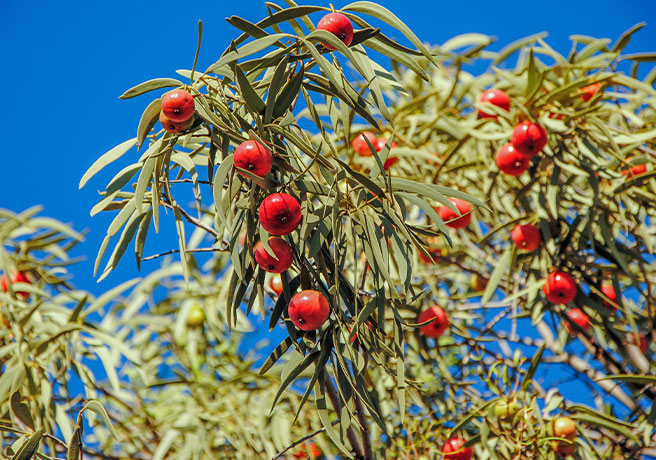
Sandalwood
Sandalwood is an oil coming from the East Indian sandalwood tree. Sandalwood is common in both Ayurvedic medicine and traditional Chinese Medicine (TCM) for many different topical applications. Following aromatherapy with sandalwood, participants in two separate studies found an overall decrease in anxiety levels. One study found that upon inhalation, the participants blood pressure and cortisol levels had decreased. Topically, sandalwood is high in antioxidants which has potential to help reduce damage cause by free radicals, exfoliate the skin, soothe sunburns, remove suntan, and reduce dry skin and wrinkles giving the skin it’s radiant shine back.
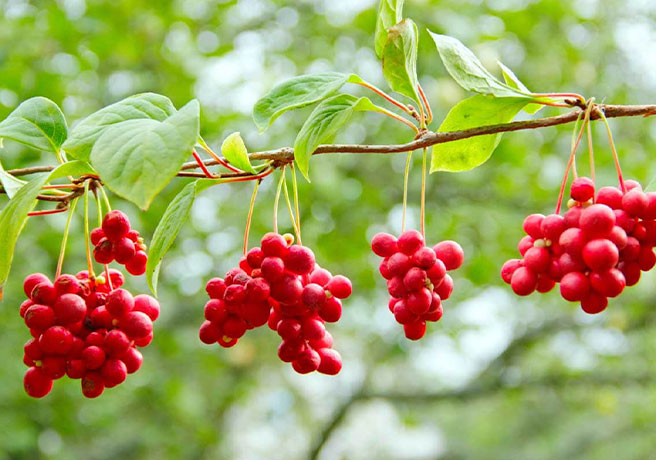
Schisandra Plant
Schisandra is a vine native to Northern China, East Russia, and Korea, that produce small red fruits that are often referred to as the five-flavor-fruit. Schisandra is classified as an adaptogen (plants and mushrooms that help your body respond to stress, anxiety, fatigue, and overall wellbeing), and has been used in traditional Chinese medicine as a boost for ones overall Chi (energy, virality, youthfulness, and vigor). Research into this ingredient has found multiple potential benefits as an Alzheimer’s deterrent and as an aid for those with liver damage. In 2016, it was also studied as a menopause aid, with studies showing it to be effective with alleviating some symptoms including hot flashes, sweating, and heart palpitations.
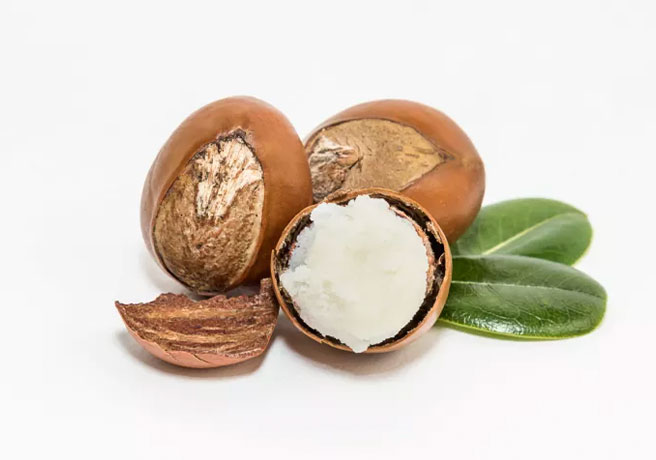
Shea Butter Nuts
These nuts are used to extract the popular ingredient shea butter. This “butter” is loaded with naturals vitamins and acids to help the skin truly glow. The acids inside help combat oxidative stress to allow healthy skin cell turnover and support, while vitamins A and E help heal the skin and block harmful UV rays.
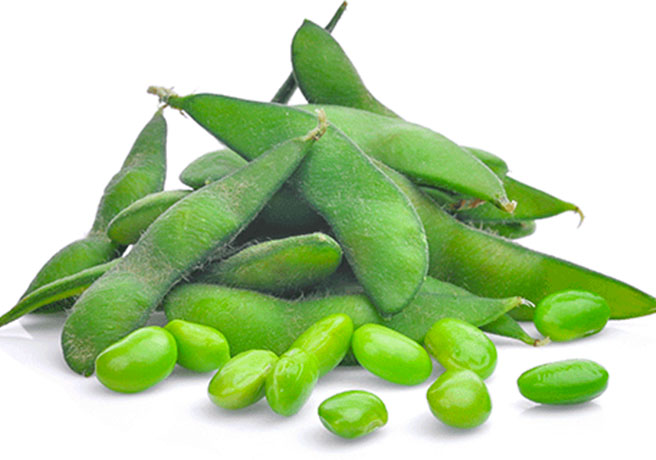
Vegetable Glycerin (Soybean Pods)
While some companies get vegetable glycerin as a byproduct from soap making, we work to ensure ours ingredients are produced naturally, coming directly from the fats found in vegetable oils (soybean). Vegetable glycerin is a natural humectant (moisture preserver). When paired with other natural oils and moisturizing ingredients, vegetable glycerin works to seal in the moisture on the top layer of the skin, while the other ingredients work their way deep into the skin cells to provide long-lasting moisture.
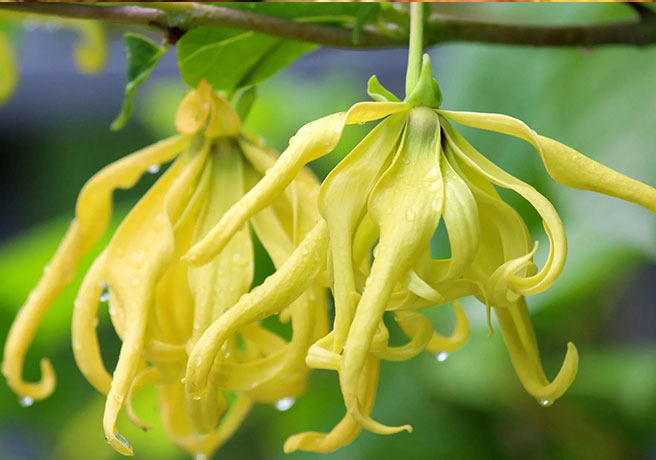
Ylang-Ylang
Ylang-Ylang, often referred to as the cananga tree, originates from the Philippines. Using the flowers, ylang-ylang oil can be extracted providing a strong floral aroma. Research done on ylang-ylang has shown a reduction in systolic and diastolic blood pressure in men leading to an overall sedative effect. Other published researched noted that both inhalation and topical application not only provided a boost in self-esteem, but also reduced the overall anxiety of those tested.


